

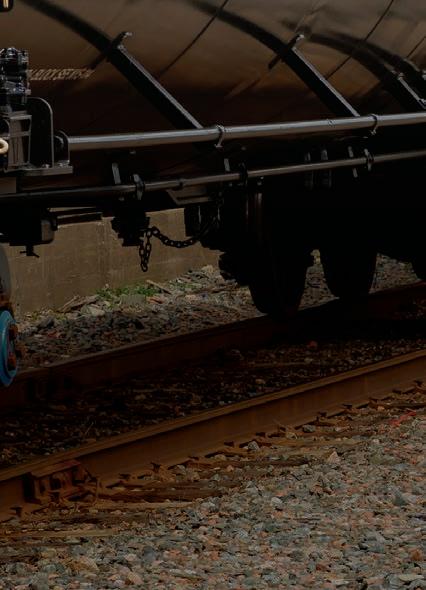










FEBRUARY 2023 www.ethanolproducer.com PLUS Green Ship Fuel From Ethanol CO2 PAGE 14 Good CIP, Sound Hygiene PAGE 34 PAGE 28 How Rail Service, Speed Can Improve TURNAROUND TIME






































847-5 64-57 70 AmplifyYourYield.com
AMYL Pro CTE Global launches the multi-activity blend AMYL Pro to enhance your liquefaction performance. The power behind the product. This is our first product that combines alpha-amylase, protease, and xylanase activities in one blend and tolerates high temperatures and a wide pH range. Test results are already showing some of the highest corn oil yields and liquefaction performance to date. Contact us today to learn more.
Introducing

ON THE COVER





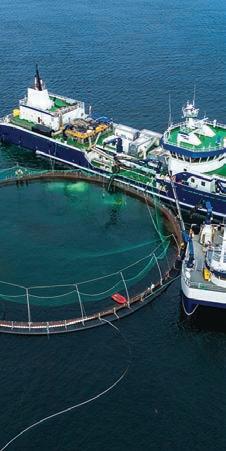



4 | ETHANOL PRODUCER MAGAZINE | FEBRUARY 2023 DEPARTMENTS 4 AD INDEX/EVENTS CALENDAR 6 EDITOR'S NOTE By Land, Sky, Sea … and Beyond
8 VIEW FROM THE HILL Ready. Set. Go!
Geoff
10 GLOBAL SCENE Top Ethanol Markets Remain Dependable By
12 BUSINESS BRIEFS 42 MARKETPLACE
Producer Magazine:
February 2023, Vol. 29, Issue 2. Ethanol Producer Magazine is published monthly by BBI International. Principal Office: 308 Second Ave. N., Suite
ND 58203. Periodicals Postage Paid at Grand Forks, North Dakota and additional mailing offices. POSTMASTER: Send address changes to Ethanol Producer Magazine/Subscriptions,
N., Suite 304, Grand Forks, North Dakota 58203. FEATURES 14 COLLABORATION Tying Onto CO2 Utilization Carbon dioxide to be used for green methanol By Katie Schroeder 22 COPRODUCT Circling New Opportunities A look at aquaculture and pet food markets By
28 TRANSPORT A Lot On the Lines After a rough stretch, can rail improve? By Luke
34 CLEANING Cashing In On Clean Advice from CIP and plant hygiene experts
Katie
Contents
By Tom Bryan
By
Cooper
Mackenzie Boubin
Ethanol
(USPS No. 023-974)
304, Grand Forks,
308 Second Ave.
Katie Schroeder
Geiver
By
Schroeder
FEBRUARY 2023 VOLUME 29 ISSUE 2 14 22 28 34
More than 70 percent of U.S. ethanol is transported via railway. Over the past three years, average terminal dwell times have been 32 percent above pre-pandemic levels, and the average ethanol unit train dwell time increased 64 percent. Average train speed for ethanol unit trains decreased 14 percent, too, as the rail industry shed over 40,000 jobs, according to the Renewable Fuels Association. PHOTO: STOCK
EDITORIAL
President & Editor
Tom Bryan tbryan@bbiinternational.com
Online News Editor
Erin Voegele | evoegele@bbiinternational.com
Staff Writer
Katie Schroeder katie.schroeder@bbiinternational.com
DESIGN
Vice President of Production & Design
Jaci Satterlund | jsatterlund@bbiinternational.com
Graphic Designer
Raquel Boushee | rboushee@bbiinternational.com
PUBLISHING & SALES
CEO
Joe Bryan | jbryan@bbiinternational.com
Vice President of Operations/Marketing & Sales
John Nelson jnelson@bbiinternational.com
Senior Account Manager/Bioenergy Team Leader
Chip Shereck cshereck@bbiinternational.com
Account Manager
Bob Brown bbrown@bbiinternational.com
Circulation Manager
Jessica Tiller | jtiller@bbiinternational.com
Marketing & Advertising Manager
Marla DeFoe | mdefoe@bbiinternational.com
EDITORIAL BOARD
Ringneck Energy Walter Wendland
Little Sioux Corn Processors Steve Roe
Commonwealth Agri-Energy Mick Henderson
Aemetis Advanced Fuels Eric McAfee
Western Plains Energy Derek Peine
Front Range Energy Dan Sanders Jr.
Customer Service Please call 1-866-746-8385 or email us at service@bbiinternational.com. Subscriptions Subscriptions to Ethanol Producer Magazine are free of charge to everyone with the exception of a shipping and handling charge for anyone outside the United States. To subscribe, visit www.EthanolProducer.com or you can send your mailing address and payment (checks made out to BBI International) to: Ethanol Producer Magazine Subscriptions, 308 Second Ave. N., Suite 304, Grand Forks, ND 58203. You can also fax a subscription form to 701-746-5367. Back Issues, Reprints and Permissions Select back issues are available for $3.95 each, plus shipping. Article reprints are also available for a fee. For more information, contact us at 866-746-8385 or service@bbiinternational.com. Advertising Ethanol Producer Magazine provides a specific topic delivered to a highly targeted audience. We are committed to editorial excellence and high-quality print production. To find out more about Ethanol Producer Magazine advertising opportunities, please contact us at 866-746-8385 or service@ bbiinternational.com. Letters to the Editor We welcome letters to the editor. Send to Ethanol Producer Magazine Letters to the Editor, 308 2nd Ave. N., Suite 304, Grand Forks, ND 58203 or email to editor@bbiinternational.com. Please include your name, address and phone number. Letters may be edited for clarity and/or space.
Advertiser Index
2023 Int'l Fuel Ethanol Workshop & Expo 3 2023 Summer Fuel Ethanol Plant Map 41 ACE American Coalition For Ethanol 24 AgCountry Farm Credit Services 37
Archangel Inc. 40 Check-All Valve Mfg. Co. 32 CoBank 7
CTE Global, Inc. 2 D3MAX LLC 20-21
Fagen Inc. 44 Fluid Quip Mechanical 13 Fluid Quip Technologies, LLC 26 Growth Energy 12 ICM, Inc. 17
IFF, Inc. 9
Lallemand Biofuels & Distilled Spirits 11 Leaf by Lesaffre 33
Natwick Associates Appraisal Services 18
Navigator CO2 Ventures 19
Phibro Ethanol 27
POET LLC 39
Premium Plant Services, Inc. 38
RPMG, Inc. 30
Trinity Rail Group 42 Trucent 25
Victory Energy Operations, LLC. 16 WINBCO 31
Upcoming Events
2023 International Biomass Conference & Expo
February 28 - March 2, 2023
Cobb Galleria Centre, Atlanta, GA (866) 746-8385 | BiomassConference.com
Now in its 16th year, the International Biomass Conference & Expo is expected to bring together more than 800 attendees, 140 exhibitors and 65 speakers from more than 21 countries. It is the largest gathering of biomass professionals and academics in the world. The conference provides relevant content and unparalleled networking opportunities in a dynamic business-to-business environment. In addition to abundant networking opportunities, the largest biomass conference in the world is renowned for its outstanding programming—powered by Biomass Magazine—that maintains a strong focus on commercial-scale biomass production, new technology, and near-term research and development.
2023
Int'l Fuel Ethanol Workshop & Expo June 12-14, 2023
CHI Health Center, Omaha, NE (866) 746-8385 | FuelEthanolWorkshop.com
From its inception, the mission of this event has remained constant: The FEW delivers timely presentations with a strong focus on commercial-scale ethanol production—from quality control and yield maximization to regulatory compliance and fiscal management. The FEW is the ethanol industry’s premier forum for unveiling new technologies and research findings. The program is primarily focused on optimizing grain ethanol operations while also covering cellulosic and advanced ethanol technologies.
2023
Biodiesel Summit: Sustainable Aviation Fuel & Renewable Diesel June 12-14, 2023
CHI Health Center, Omaha, NE (866) 746-8385 | BiodieselSummit.com
The Biodiesel Summit: Sustainable Aviation Fuel & Renewable Diesel is a forum designed for biodiesel and renewable diesel producers to learn about cutting-edge process technologies, new techniques and equipment to optimize existing production, and efficiencies to save money while increasing throughput and fuel quality. Produced by Biodiesel Magazine, this worldclass event features premium content from technology providers, equipment vendors, consultants, engineers and producers to advance discussion and foster an environment of collaboration and networking through engaging presentations, fruitful discussion and compelling exhibitions with one purpose, to further the biomass-based diesel sector beyond its current limitations.
Please check our website for upcoming webinars www.ethanolproducer.com/pages/webinar
ETHANOLPRODUCER.COM | 5
COPYRIGHT ©
2023 by BBI International
TM
Please recycle this magazine and remove inserts or samples before recycling
By Land, Sky, Sea … and Beyond
Before we’ve even fully wrapped our heads around the idea of sustainable aviation fuel taking our industry from ground to sky, our most underappreciated coproduct is suddenly poised to help decarbonize transport by sea. Space might very well be next, but let’s take it one step at a time.
We usually pass on claims about turning carbon dioxide into fuel—we’ve all heard it before—but the news about Red River Energy LLC, a 36 MMgy ethanol plant in eastern South Dakota, partnering with Carbon Sink to produce green methanol for international shipping giant Maersk really grabbed our attention (I mean, what can’t ethanol become?).
Construction on the biobased methanol facility won’t start for another two years, but the plan helps us envision how one segment of our industry might pursue carbon capture and sequestration (CCS) while the rest may opt for carbon capture and utilization (CCU), fulfilling both conventional market needs for CO2, like beverage carbonation and dry ice, and new uses like this—diesel-replacing biofuel for massive ocean-going vessels. We detail this bold CCU play in “Tying Onto CO2 Utilization,” on page 14, explaining what motivated Red River Energy to welcome Carbon Sink onto its campus in lieu of CCS. Hint: decarbonized heat, less natural gas use and a lower CI helped seal the deal.
Ultimately, Carbon Sink intends to co-locate with as many as 10 ethanol plants across the Midwest to fulfill what it foresees as a huge global demand for green methanol, which isn’t just a good diesel replacement but a good product for variety of industrial uses from plastics and paints to foams and fibers. Is this the start of a CO2 utilization renaissance? Maybe.
Next, on page 22, we turn our focus from our least monetized coproduct to our most in “Circling New Opportunities.” Distillers coproducts come in many forms—all are valuable—but the advent of high protein, more than anything else, seems to be opening doors to two exciting new markets: aquaculture and pet food. Both markets come with steep challenges (regulation, standards, audits, scrutiny) but they are worth winning for those that can.
Moving both ethanol and ethanol coproducts to market is, of course, highly dependent on the capacity of U.S. rail. After averting a national labor strike and starting to reverse notable declines in speed and service, the rail industry seems to be in recovery. In “A Lot On the Lines,” on page 28, we look at what likely caused the problems, most notably longer dwell times and slower speed. It’s never one thing, but a workforce shortage is the principal cause of both reduced service and a disconnect between carriers and the unions that almost shut down rail—and ethanol with it. Thank goodness we’re past it.
Finally, be sure to read “Cashing In On Clean,” on page 34, a useful look at how clean-in place, or CIP, coupled with other key microbial control practices, is a key pilar of good plant hygiene and plant optimization. As we report, doing it right can literally save you millions.
6 | ETHANOL PRODUCER MAGAZINE | FEBRUARY 2023
FOR INDUSTRY NEWS: WWW.ETHANOLPRODUCER.COM OR FOLLOW US: TWITTER.COM/ETHANOLMAGAZINE Editor's Note
The ethanol industry continues to evolve and remains economically volatile. CoBank’s long-standing mission is to serve U.S. agriculture, including our ongoing support and role as a strategic partner for the ethanol industry.
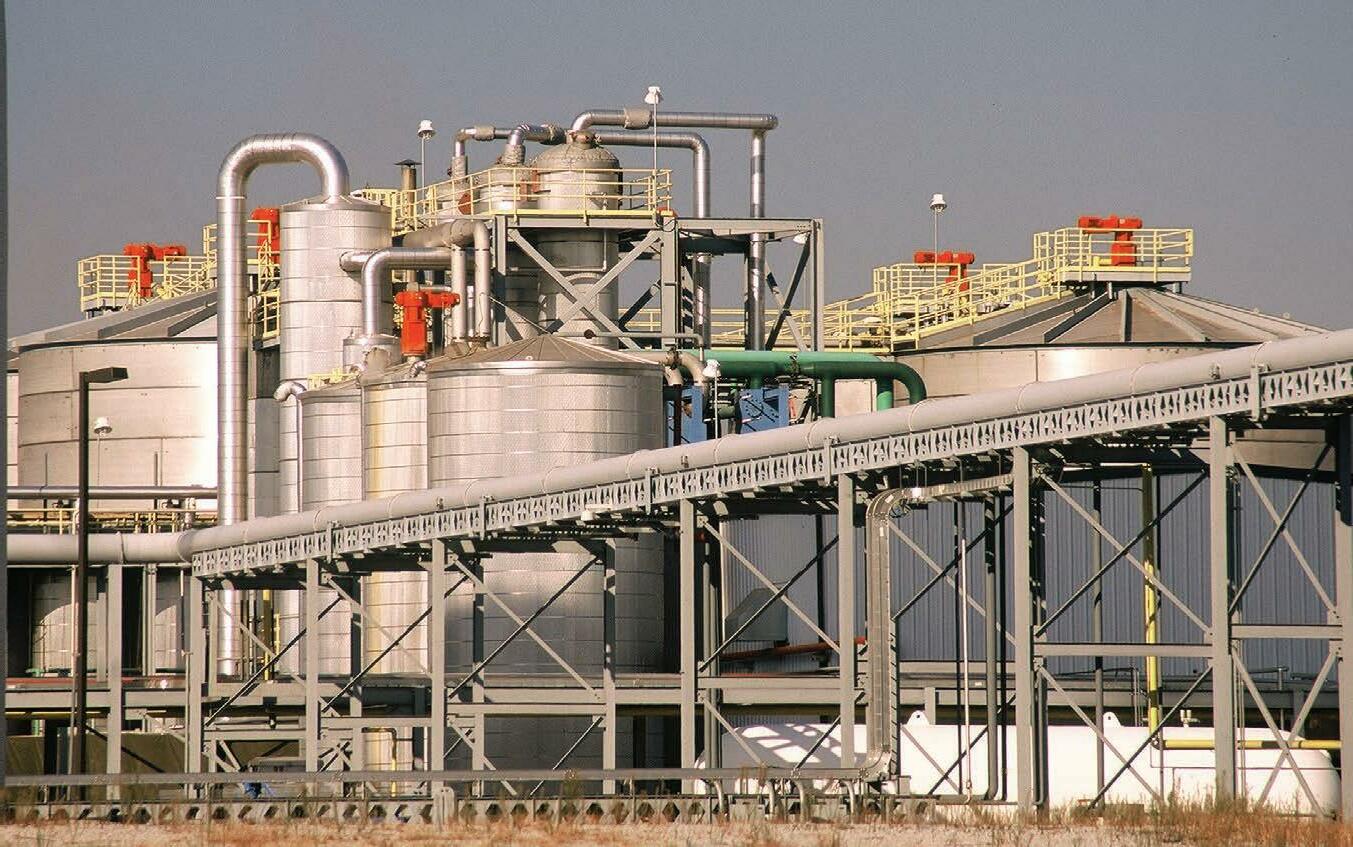





800-542-8072 • CoBank.com/GoEPM3
A key and dependable lender to the ethanol industry for over 20 years COOPERATIVE. CONNECTED. COMMITTED. Read “2023: The Year Ahead” Sign up to receive up-to-date analytical reports about your industry and more. Visit: CoBank.com/GoEPM3
Ready. Set. Go!
President and CEO
Renewable Fuels Association 202-289-3835
gcooper@ethanolrfa.org

In 2022, the U.S. ethanol industry regained the same sort of momentum that fueled its remarkable growth following passage of the Renewable Fuel Standard 17 years ago. Just look at what we were able to accomplish last year: In December, the Environmental Protection Agency proposed RFS volumes through 2025 that provide certainty and an opportunity for growth. The agency also put an end to abusive small refiner exemptions that had decimated RFS demand for years and established a pathway for ethanol to serve as a “biointermediate” feedstock for new applications like sustainable aviation fuel. At the direction of President Biden, EPA also provided emergency waivers allowing the summertime use of E15, while also committing to make E15 more broadly available to consumers across the country by the summer of 2023. At the same time, USDA finalized rules enabling ethanol producers to access $700 million in COVID relief funding and expanded the HBIIP program, providing resources for gasoline marketers wanting to provide E15 and flex fuels like E85 to consumers.
On Capitol Hill, the Inflation Reduction Act adopted in August heralded new tax incentives for sustainable aviation fuels, established a Clean Fuel Production Credit, enhanced the 45Q carbon capture credit, and appropriated another $500 million for higher ethanol blend infrastructure. Other bills that would establish a growing role for high-octane, low-carbon fuels—including the Next Generation Fuels Act—attracted growing support in both parties and both chambers of Congress. In an important development, we also gained a crucial new ally in our work toward making E15 available year-round, the American Petroleum Institute. With the API’s support, we saw the Consumer and Fuel Retailer Choice Act filed in both the House and Senate with momentum building for a permanent solution.
In the marketplace, ethanol production, demand and exports all continued to rebound from the pandemic malaise. That’s real momentum, and the Renewable Fuels Association will continue to build on the successes of last year while we move our industry to new levels this year.
In 2023, RFA will continue to pursue policy and regulatory solutions that provide parity for E15, allowing year-round accessibility for consumers and to reduce costs at the pump. We still believe that the secret to sustained success in the ethanol industry lies in the ability to reduce carbon emissions and pursing policies promoting and incentivizing low carbon fuels at the pump, such as E15, E20/30 and E85.
As exciting as last year’s successes are, RFA and the ethanol industry are poised for even more success in 2023. As we move forward this year, RFA members will continue living our pledge to achieve net-zero carbon emissions by 2050 and lead efforts here and abroad in expanding market opportunities for ethanol. We look forward to showcasing our annual National Ethanol Conference with well-known industry leaders and presenters at the end of February in Orlando. Our conference topics reflect on the past year and the continued momentum going into 2023 with a very appropriate theme—Ready. Set. Go!
8 | ETHANOL PRODUCER MAGAZINE | FEBRUARY 2023
Geoff Cooper
View from the Hill
SYNERXIA®
SYNERXIA®
SYNERXIA®

ww w.xcelis.com ©2022 International Flavors & Fragrances Inc. (IFF). IFF, the IFF Logo, and all trademarks denoted with ™, or ® are owned by IFF or its affiliates unless otherwise noted.
Yeasts
XCELIS®
– Our most robust yeast delivering a powerful
of yield and glucoamylase expression
SAPPHIRE
combination
Our highest yielding yeast driving
to the
of performance
RUBY –
plants
peak
– Our fastest yeast geared for maximum plant throughput
EMER ALD
your
is increased yield, robustness or plant throughput, we
your specific
market
SY NE RX IA ® GEMS TO NE CO LLE CT IO N Whether
goal
have the right yeast or yeast blend tailored to
process and
conditions.
Mackenzie Boubin Director of Global Ethanol Export Development U.S. Grains Council

mboubin@grains.org
Top Ethanol Markets Remain Dependable
Ethanol exports for marketing year (MY) 2021/22 totaled 1.45 billion gallons, marking the third largest MY on record, and 230 million gallons above 2020/21’s numbers. This 1.45 billion gallons is valued at $4 billion, and its production required the use of the equivalent of 515 million bushels of corn.
Ethanol remained a robust and diversified market with U.S. ethanol exported to nearly 80 different countries in 2021/22. Total U.S. ethanol exports for 2021/22 were up in eight of the top 10 markets, with Canada, the European Union, Nigeria, Singapore and the United Kingdom all setting records.
Canada was the largest market for U.S. ethanol in 2021/22 with nearly 470 million gallons exported, a 33 percent increase year-on-year and the highest on record. Canada’s recently released Clean Fuel Regulations formalized policy that provides stable demand for biofuels into 2030 and beyond. As a result, the Canadian government anticipates that the country will achieve a 15 percent national ethanol blend rate by 2030 as an avenue to comply with CFR carbon mitigation requirements, up from its current 8 percent national ethanol blend average.
South Korea surpassed India to become the second-largest market for U.S. ethanol in MY 2021/22, totaling 176 million gallons (consuming 62 million bushels), worth $444 million, up 28 percent from MY 2020/21.
The EU was the third largest market for U.S. ethanol in 2021/22, with exports up 60 percent yearon-year, hitting a new record of 140 million gallons exported. U.S. ethanol exports to the UK reached 84 million gallons, an increase of over 600 percent from 2020/21, landing as the sixth largest market for U.S. ethanol exports in 2021/22. Furthermore, as a result of the continued rollout of its national E10 policy and implementation of Renewable Transport Fuel Obligation (RTFO), the UK reached an eight percent national blend average, up from 4.7 percent in 2021.
Utilizing U.S. ethanol as a measure to reduce inflationary pressures, increase human health and contribute to decarbonization efforts is an idea that is resonating throughout the globe as more countries seek to implement higher biofuel standards and utilize ethanol to the fullest potential. These goals are a critical aspect of the U.S. Grains Council’s mission of developing overseas markets for U.S. product, to the benefit of domestic producers and foreign end-users alike.
The USGC’s ethanol staff, along with its ethanol advisory team, have identified key priority and second tier markets to grow demand as a part of the Council’s target of helping U.S. producers export four billion gallons of ethanol by 2025. With growing markets such as Japan, Indonesia, India and Canada, U.S. ethanol is well positioned to deliver an affordable, sustainable, reliable and consistent product to countries looking to immediately reduce transportation emissions and consumer costs.
With many emerging opportunities across the world, the Council’s ethanol team strives to develop access and support educational and informational campaigns to the various stakeholders within the global fuel supply chain.
Building upon the momentum for MY 2021/22, the Council will continue to assist countries in creating their own clean fuel standard or discretionary blend levels that would incentivize ethanol consumption, and display how U.S. ethanol can easily be implemented within existing world infrastructure as a right here-right now solution to carbon mitigation strategies.
10 | ETHANOL PRODUCER MAGAZINE | FEBRUARY 2023
Global Scene
SOLUTIONS, DESIGNED BY LBDS.


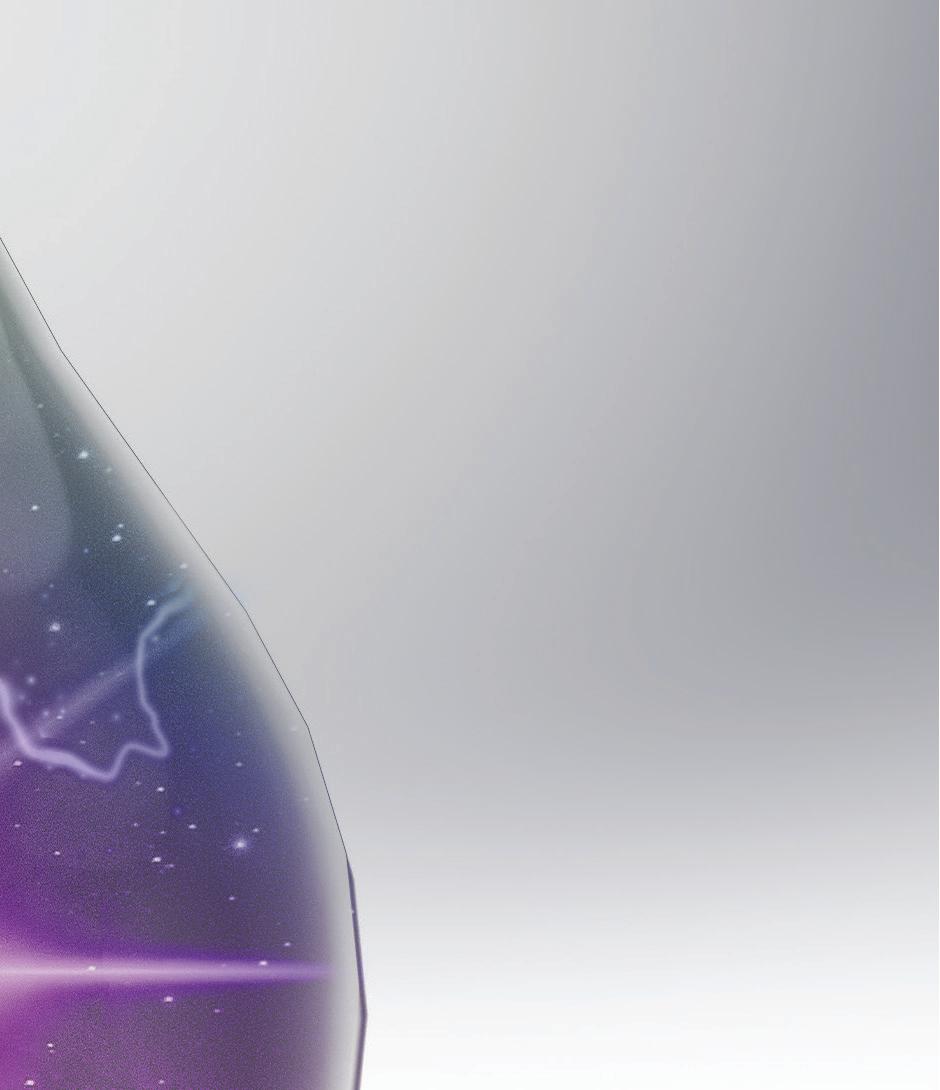


We put Fermentation First™. You get yeast, yeast nutrition, enzymes and antimicrobial products, alongside the industry leading expertise of our Technical Service Team and education resources. Find the right solution for your ethanol business at LBDS.com.

MEET TODAY’S GOALS. ANSWER TOMORROW’S QUESTIONS.
© 2023 Lallemand Biofuels & Distilled Spirits
BUSINESS BRIEFS


PEOPLE, PARTNERSHIPS & PROJECTS
MN Bio-Fuels highlights 2022 advocacy, market development


The Minnesota Bio-Fuels Association has released its 2022 Annual Report, which highlights the group’s work in the areas of advocacy, communications and biofuel marketing and supply chain development. MN Bio-Fuels played a key role in securing $6 million for a biofuel infrastructure grant program in 2022, assisting retailers in securing the grant funding. The organization also fought hard for year-
Green Plains partners on synthetic methane project
Green Plains Inc., Tallgrass and Osaka Gas USA, a wholly owned subsidiary of Japan-based Osaka Gas, are working together to study the production of up to 200,000 tons per year of synthetic methane in the Midwest. The project partners aim to produce synthetic methane from low-carbon hydrogen and biogenic CO2 captured from Green Plains ethanol
round E15, which reached record sales in Minnesota last year, totalling 9.58 million gallons.
Fuels plant

LanzaJet joined government officials, industry leaders and investors in December to celebrate the progress it is making on its Freedom Pines Fuels facility in Soperton, Georgia. The company says construction on the facility—reportedly the world’s first ethanol-based sustainable aviation fuel (SAF) production plant—is expected to be completed and commis-

plants. The study is scheduled to be complete in mid-2023. “This is an important step in our decarbonization efforts across our platform, further demonstrating the crucial role our assets can play in the future of clean energy production using proven technologies,” said Todd Becker, Green Plains president and CEO.

sioned in 2023. The plant will produce 10 million gallons of SAF and renewable diesel per year using a range of sustainable, low-carbon intensity ethanol. When operational, the Freedom Pines Fuels biorefinery will approximately double the amount of current SAF production in the United States.

Learn more at GrowthEnergy.org/E15 Nationwide E15 Would SAVE $20.6 BILLION IN ANNUAL FUEL COSTS SUPPORT 188,000 ADDITIONAL JOBS PUT $36. 3 BILLION IN INCOME INTO THE POCKETS OF AMERICAN HOUSEHOLDS GENERATE $66. 3 BILLION FOR THE U. S. GDP G $ B
progress
Jeff Oestmann (left), board vice president of MN Bio-Fuels, joined Brian Werner, executive director of MN Bio-Fuels, to release the group’s 2022 Annual Report.
LanzaJet celebrates
at Freedom Pines
IRS issues guidance on new SAF tax credit

The U.S. Department of the Treasury’s Internal Revenue Service has issued a notice on the sustainable aviation fuel (SAF) credit created by the Inflation Reduction Act of 2022. Notice 2023-06 explains the eligibility requirements for the credit, the various methods in which a claimant may claim the credit, and which parties must be registered for the different activities in the process. The credit starts

at $1.25 per gallon of SAF, which must have a minimum lifecycle GHG reduction of 50 percent to qualify. The notice asks for public comments on a variety of issues, which will help Treasury and IRS develop additional guidance.
PLANT UPTIME IS IMPORTANT TO EVERYONE
Our full service team of experts have 20 years of ethanol plant maintenance reliability and uptime history. 24/7 support and ready access to a full inventory and all Fluid Quip equipment parts, ensures that you maintain your plant’s uptime status.
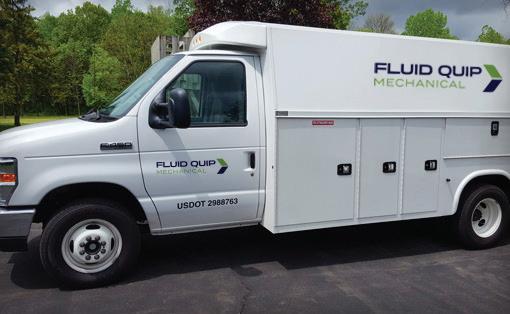
Versalis, Eni’s chemical company, has acquired technology from DSM to produce enzymes for second-generation ethanol. The agreement has a strategic value for Versalis as it integrates with the proprietary technology currently used at the company’s Crescentino, Italy, plant for the production of ethanol and chemical products from lignocellulosic biomass.

Enzymes are essential for the production of second-generation sugars as they allow the saccharification of biomass. DSM enzymes have already been successfully tested at Versalis research centers for their use in conjunction with the company’s proprietary Proesa technology.
PARTS
• OEM Parts Warehouse
• $1 million+ on-hand inventory
• Fully stocked trucks
• Overnight/hot shot shipping
•
Virgin Atlantic has committed to purchasing 10 million gallons per year of sustainable aviation fuel (SAF) to be produced by Gevo Inc. and supplied by Virgin Atlantic’s joint venture partner, Delta Air Lines. The agreement with Delta builds on the existing long-term partnership between Delta and Gevo and increases the

global use of SAF. The ethanol will come from one of Gevo’s future production facilities, the first of which is being built in South Dakota. Gevo’s production process separates sugars and proteins from nonedible industrial corn grown using climate smart agricultural practices.
•
•
•
•
•
•
•
EQUIPMENT SERVICE
Factory
Trained & Certified
MSC™ Systems
SGT™ Grind Systems
FBP™
Fiber By-Pass Systems
MZSA™ Screens
Paddle Screens
Grind
Mills
Centrifuges
Versalis acquires technology to produce enzymes for 2G ethanol
Virgin Atlantic to purchase 70 million gallons of ethanol-based SAF

14 | ETHANOL PRODUCER MAGAZINE | FEBRUARY 2023
EMBARKING ON NEW ENERGY: Green methanol produced by Carbon Sink at Red River Energy will be sold to Maersk as part of the shipping company’s effort to reduce its carbon footprint.
PHOTO: STOCK
TYING ONTO CO2 UTILIZATION
Through a partnership with a South Dakota ethanol plant, Carbon Sink plans to utilize CO2 for the production of green methanol to power a shipping industry behemoth.
 By Katie Schroeder
By Katie Schroeder
One third of the corn kernel— the CO2—goes up the stack as a gas. Some ethanol producers collect it and sell it for commercial use and others are beginning to sequester it underground, but energy development company Carbon Sink has a different purpose in mind. Carbon Sink wants to pay ethanol producers for that CO2 and turn it into eMethanol or “green” methanol, explains Randy Roy, co-founder and chief strategy officer for Carbon Sink.
Red River Energy, a 36 MMgy corn ethanol plant located near Rosholt, South Dakota, plans to partner with Carbon Sink under a long-term agreement to provide the CO2 needed for the latter company’s process. Warren Anderson, chairman of the board for Red River Energy, and Jay Sommers, the plant’s general manager, explain why they chose to partner with Carbon Sink and the benefits of carbon capture and utilization (CCU).
What is Methanol?
Methanol is produced all across the world in the amount of 100 million tons per year, according to Roy. “Gray” or non-renewable methanol is typically made using natural gas in the United States, and gasified coal in China. Methanol is widely used in the petrochemical industry as a feedstock to make products such as glue, paint, varnish, foam and fibers. It is also used as a fuel since it is nearly
a drop-in replacement for diesel in the shipping industry. Methanol is also used in Europe as an octane enhancer. Since it is liquid at ambient temperature, it is able to be shipped by train like ethanol. Roy explains that ethanol plants are great partners because their CO2 is “biogenic,” or produced from plants, instead of “anthropogenic,” meaning originating through human activity, like gray methanol.
“We’re making the same molecule, but our methanol is manufactured using CO2 and renewable electricity, so it will have a net zero-carbon impact. And, as I mentioned, methanol is used in making a variety of things like plastic, glue, formaldehyde, paint, varnish—it’s a very popular chemical, and it’s traded worldwide,” Roy explains.
Carbon Sink plans to own and operate green methanol plants across the Midwest, co-locating with ethanol producers to buy and utilize the nearly pure streams of CO2 that come off of ethanol fermentation. Over the next eight years, Carbon Sink plans to build 10 plants across the Midwest. Though this is a high bar to strive for, Roy is confident that the company will meet its goals. He explains that the Midwest is an ideal area to develop this project because it has a high concentration of low-cost clean energy and pure CO2
“The Midwest is a great location for Carbon Sink’s operations because of two things—an abundance of CO2 from ethanol plants and low-cost renewable electricity using wind. When you combine
ETHANOLPRODUCER.COM | 15
Collaboration
those two things, our business model allows us to be the lowest cost producer of green methanol in the world,” Roy says, explaining the company’s plan to co-locate its first project with Red River Energy.

First Location
In the spring of 2021, Carbon Sink contacted Red River Energy, initiating a conversation about a potential partnership for CCU, according to Anderson. Around the same time, interest in carbon capture and sequestration (CCS) was growing, however, Red River Energy viewed CCU as a better fit for its pursuit of reducing the facility’s carbon intensity.

“We wanted to understand how Red River could reduce its CI score, and we had been looking at pipeline alternatives, CCS, and all of a sudden here was a CCU project,” Anderson says. “And it sounds attractive to think of taking our CO2—which would otherwise be emitted into the atmosphere—and combine it with another product such as hydrogen [to] make a product that somebody could use, and at the same time reduce our CI score.”
The deciding factors for Red River Energy to choose CCU over joining up with a CCS pipeline was the greater feeling of control over its CO2, the opportunity to have more input on the design of the Carbon Sink project and the potential to gain an additional source of heat and energy, Anderson explains.
For Carbon Sink, Red River Energy was a good choice for a first supplier because it is in a great location for obtaining renewable electricity from wind power, along with concentrated, pure CO2 that is a byproduct from ethanol fermentation. “The CO2 emitted from an ethanol plant is over 98 percent pure,” Anderson says. “Higher purity CO2 means lower capital cost and lower operating costs for Carbon Sink.”
Carbon Sink will own and operate a plant with a footprint of approximately 10 acres. The green methanol plant is currently in the early stages of development, with the plan to start construction in 2025, coming online in 2027.
PRODUCER_HALF PG AD_VISION BURNERS_12-09-2022_PRINT.pdf 1 12/9/2022 4:41:49 PM




“We identified that plant as being in a good location for rail and wind. Equally as important, Red River Energy was really interested
in being good stewards of their resources, and they wanted to do something constructive with their resources,” Roy says. “And so, we started our conversation with them, talking about how we could help them monetize that one-third of the kernel that currently goes up the stack. That’s really where it started, and ... it’s a really great location for all the things that we need onsite.”
The methanol plant will use Red River Energy’s existing rail infrastructure to ship the finished biofuel as well. Roy explains that the methanol plant’s production capacity will be approximately two-thirds of the capacity of the ethanol plant they collocate with. For example, if the ethanol plant produces 50 MMgy, the green methanol plant will produce about 33 MMgy.
Process Details
Carbon Sink plans to buy the electricity needed for its process from a provider of renewable electricity. Roy explains that this location will get its power from a wind energy project currently under development and expected
ETHANOL
Collaboration


 HOST FACILITY: By electing to pursue carbon utilization over sequestration, Red River Energy will be directing its clean CO2 into another low-carbon fuel, supporting a co-located green methanol plant.
PHOTO: RED RIVER ENERGY
HOST FACILITY: By electing to pursue carbon utilization over sequestration, Red River Energy will be directing its clean CO2 into another low-carbon fuel, supporting a co-located green methanol plant.
PHOTO: RED RIVER ENERGY
in Biofuels Plant Appraisals
Few certi ed appraisers in the United States specialize in ethanol plant and related biofuels properties. Natwick Appraisals o ers more than 50 years of worldwide experience. Your appraisal will be completed by a certi ed general appraiser and conform to all state and federal appraisal standards. Our primary specialty in industrial appraisal work is with ethanol, biodiesel, and other types of biofuel facility appraisals, including cellulosic ethanol plants.

to be complete around the same time as the methanol plant.
The technology used to produce the methanol is already established and tested, coming with very little technology risk. Roy explains. “Methanol synthesis technology that utilizes various forms of hydrogen and carbon feedstock already exists. It’s been in operation for over 100 years. Two commercialscale plants are currently operational that use CO2 and hydrogen exclusively, one in China and one in Norway,” he says. “The integration of a green methanol plant with an ethanol plant, that doesn’t exist, so we’re going to be doing something new.”
Carbon Sink will partner with catalytic chemistry company, Topsoe, utilizing its technology to produce the green methanol. The green methanol produced at Red River Energy will be sold to shipping giant, Maersk, as part of the company’s effort to reduce its carbon footprint. The methanol will be used in place of diesel in its ships. Roy explains that the methanol will be primarily used in newer ships, which use dual-fuel engines that can burn either green methanol, diesel or a blend of both. The three companies that manufac-

ture dual-fuel engines for ships are MAN Engines, Rolls Royce and Wärtsilä.
‘CO2 Scarcity Paradigm’
Roy believes that green methanol has the potential to help transition to a “CO2 scarcity paradigm” by making CO2 valuable. Right now, the focus is primarily on managing CO2 since there is an abundance of it from burning fossil fuels, he says. However, if technologies that utilize CO2 become more prevalent, that will have a bigger impact on reducing CO2 in the atmosphere because companies will have an incentive to capture CO2 and use it as a feedstock for an ever-growing list of products.
“Methanol has the opportunity to be the tip of the spear in that transition from CO2 abundance to CO2 scarcity,” Roy says. “That’s what excites me about green methanol is that it’s the tip of the spear. I think Red River Energy really understands that, and we’re pretty excited that they want to be at the tip of the spear with us as we help transition to that paradigm.”
The chemical makeup of green methanol allows it to be a good option for industries
18 | ETHANOL PRODUCER MAGAZINE | FEBRUARY 2023 800-279-4757 701-793-2360 Callusforafree,no-obligation consultationtoday. Natwick Appraisals 1205 4th Ave. S., Fargo, ND 58103 www.natwickappraisal.com natwick@integra.net
Specialist
• Valuation for nancing • Establishing an asking price • Partial interest valuation
The
Collaboration
THE OCEAN BLUE: Maersk plans to build a eet of vessels capable of running on green methanol over the next two years. The company has announced half a dozen strategic partnerships to secure the volumes of biofuel needed to meet the demands of it's next-generation container ships.
PHOTO: MAERSK
like the petrochemical industry, with difficultto-decarbonize products such as plastics or paint, because the green methanol molecule has the same structure as gray methanol but is not sourced from fossil-based fuels.

Producer Perspective

For Red River Energy, CCU is a path to lower carbon intensity, allowing the plant to stay competitive and open new market opportunities for ethanol with a lower CI. “In the ethanol industry, it’s an energy industry,” Anderson says. “We’re very aware that we have a product that needs to be dealt with, and I think as an industry and as a country [we’re looking] at all the sources of CO2 and how it’s affecting climate change. Ethanol plants are aware of this issue and, thus, the concepts of CCS and CCU have come about.”
Red River Energy may have an opportunity to recapture the heat produced from the electrolyzer to reduce its natural gas usage, Sommers says. Along with the carbonfree heat, Roy says the Carbon Sink plant will also be able to provide Red River Energy with renewable electricity, dropping its CI
score even further. These efficiencies would help the ethanol produced at the facility stay competitive in a market that increasingly values carbon reduction.
Roy emphasizes that Carbon Sink helps ethanol producers monetize their CO2 without any concerns about volatile pricing, since prices are locked in under a long-term, fixed price contract, creating a stable revenue stream. Producers also do not need to invest in any way to have a Carbon Sink plant colocated with their plant, “we’re the ones who are building the plant, paying for the plant, we own and operate the plant; they don’t have to make any investment,” Roy says.
For Red River Energy, the prospect of having its CO2 utilized to produce a fuel for use by a different industry is appealing. “We’re excited to be involved with this and think it’s great that we can reduce the amount of CO2 that’s emitted into the atmosphere and that we can make a product that can be utilized by third parties,” Anderson says.
 Author: Katie Schroeder Contact: katie.schroeder@bbiinternational.com
Author: Katie Schroeder Contact: katie.schroeder@bbiinternational.com



Learnmor ea t www.navigatorco2.com





22 | ETHANOL PRODUCER MAGAZINE | FEBRUARY 2023
NET IMPACT: Plant-based proteins are often desired in aquaculture markets that emphasize sustainable practices, and even ocean raised salmon diets are now comprised of roughly 40% plant-based protein from on-land sources.
CIRCLING NEW OPPORTUNITIES
Ethanol Producer Magazine speaks with pet food industry consultants and representatives of the U.S. Grains Council to learn more about the challenges, benefits and opportunities in the growing aquaculture and pet food markets.

 By Katie Schroeder
By Katie Schroeder
With the rise of technology that enables corn ethanol plants to improve the fiber and protein content of their distillers coproducts, the ethanol industry is looking for outlets for these higher-value outputs. Two industries that have been emerging as premier destinations for these enhanced coproducts are the pet food and aquaculture markets.
Kent Cooper and Lisa Schole, co-owners of Evolve Consulting, explain the challenges of entering the pet food industry, the benefits of supplying it and key information producers should know before pursuing it. Evolve Consulting does ingredient and product development for the pet food industry.
As ethanol plants look to diversify their product streams, pet food appears to be a great fit for some of the distillers coproducts many producers are now making. However, entering any new market comes with its own unique challenges and requirements for entry, and the pet food industry is no exception. The play comes with more scrutiny than supplying livestock feed due to more stringent regulatory requirements, high consumer expectations and media attention. “The livestock industry [is] very valuable, [and] the pet food industry is very valuable, but the way you get there, and the way people view them is very different,” Schole says. “A pet is fed more like a child and what [people] want to know about their pet’s feed is very similar to what you’d want to know about your children’s food.”
Market Challenges
One of the barriers to getting into pet food is the negative connotation corn has received within the pet food industry, making it difficult to get into
certain tiers of products that are marketed around not containing corn, wheat or soy. “Until somebody changes the story, corn has an uphill battle to get through before it presents any of its data,” Schole says.
However, there is a sustainability story with coproducts, which gives ethanol producers some leverage to sell their product to the pet food industry. Plant-based proteins and sustainability are selling points that could help change negative perceptions about corn-derived pet food. “If you can check all the other boxes, people have a lot more reason to get on board, because it will also build a good story about what you’re using or not using out there in the industry as well,” Cooper says.
Because ethanol plants are not consistent across the board in how their process works and what enzymes, yeasts, cleaners and other elements are used in their process, it can be more complicated to get into pet food because every producer’s coproducts have slightly different makeups. Cooper explains that other ingredients used by the pet food industry, such as chicken meal, tend to be consistent across the board in how much protein and other components they bring to the table. Ethanol producers need to be able to stay consistent in the makeup of their high-protein coproduct—and some are—to allow pet food manufacturers to formulate their ingredients consistently.
Schole explains that in order to start conversations about selling to the pet food industry, producers need to have detailed information on the makeup of their high protein coproduct, at a bare minimum including protein, moisture, ash content, fiber and amino acid content. These numbers also need to be average values that the producer can
ETHANOLPRODUCER.COM | 23
Coproduct
meet consistently on a typical production day. This information is key since the pet industry needs minimum values to know what the product can bring to the formulation, and how it fits. “Tell me what you can do day-in and day-out and give me a spreadsheet that is realistic—not a pipe dream—[values] that you can actually say you can provide,” Schole says. “And then let us put it into formulas instead of pushing the upper limits of your process and [risking] coming in out of spec.”
For those serious about entering the industry, she recommends sending out the potential ingredients for certain types of testing, such as checking to make sure there are no residual chemicals or processing agents left, and testing for the palatability and digestibility of the ingredient, will help ethanol producers give the pet food industry assurances that adding the ingredient will be safe.
Schole also says that producers should be prepared to have their plant audited by potential buyers. Producers need to make sure they can answer questions about their process and provide a flow chart of it. She suggests that producers attend events for the pet food
industry to gain a firm understanding of the terminology and build relationships within the industry.
It is important to identify what elements of a given coproduct might be attractive to the pet food industry. Cooper explains that protein is, in fact, among the most valuable components of pet food, and understanding what an ethanol producer’s coproduct can provide, whether that be fiber or protein, can actually help pet food manufacturers formulate to market needs with those characteristics in mind.
Breaking into pet food is a long-term play compared to livestock because if a producer can get their coproduct into a pet food producer’s formulation, they will have steady demand for that ingredient. “Once you have an ingredient in there, it’s serving a purpose in that diet and subbing it out is hard,” Schole explains. The total volume will be different compared to livestock feed, since the size of the animal is significantly different, but the demand will be consistent, and the value should be notably higher.
Benefits of the Pet Food Market
One of the attractive features of the pet food industry is the stability of the market. “Commonly, in the pet food industry, we say that we are as near of a recession-proof industry as you can find,” Schole says, explaining that even in hard times, people want to own pets and take care of them.
If a producer is able to get into the ingredient deck, they are in for the long-term. The pet food industry is growing steadily, five percent year over year, and if a producer is able to get in, they will be able to grow with it.
“As a whole, there [are] a lot of supply issues right now, with raw materials. So, if somebody had a lot of really good data, there is, in my opinion, not a better time to try to get into the market if you know you have a consistent supply at a reliable price that checks all those boxes,” Schole says.
Aquaculture Opportunities
Ronnie Tan, regional aquaculture consultant for the U.S. Grains Council, and Caleb Wurth, regional director for Southeast Asia and Oceania, outline the state of the aqua-


24 | ETHANOL PRODUCER MAGAZINE | FEBRUARY 2023 Coproduct
culture markets around the globe and explain what it takes to pursue these opportunities. Tan explains that the ethanol industry is consistently able to provide three “high value meals” including DDGS, high protein coproduct and corn fermented protein.







The opportunity for ethanol plant products in the aquaculture industry is high due to consumers wanting sustainability from aquaculture and the rise of input costs, Tan explains. “The aquaculture industry is growing at an impressive rate. Efficient feed-to-gain ratios in farmed fish and cultural affinity to the consumption of seafood has led to a global trend toward farmed aquaculture,” he states.

The three species within aquaculture that have a high demand for feed include shrimp, salmon and tilapia. Tan and Wurth explain that the demand for shrimp is centred in Asia and Latin America reaching 7 million metric tons. “The crude protein in the feed can range from 28 percent for economy feed to 38% for the premium high-density feed. For juvenile feeds, crude protein can reach 44,” he explains. Corn fermented protein products have great potential as an ingredient for both shrimp and salmon. Currently, the





 TANK TALK: Coproducts from the ethanol industry have the potential to be used in a variety of aquaculture purposes. Here, representatives of Iowa Corn tour a sh hatchery in Montana operated by the U.S. Fish and Wildlife Service.
PHOTO: USGC
TANK TALK: Coproducts from the ethanol industry have the potential to be used in a variety of aquaculture purposes. Here, representatives of Iowa Corn tour a sh hatchery in Montana operated by the U.S. Fish and Wildlife Service.
PHOTO: USGC
feed for both utilize fish meal, corn gluten meal and various plant meals.

The salmon market is at 3.3 million metric tons with 50 percent of that demand being met by Norway, followed by Chile and Scotland. Salmon feed is the most expensive per kg, with a crude protein of 40 percent to 48 percent dependent on the salmon’s life stage, Tan and Wurth explain. The global feed demand for tilapia is nine million metric tons yearly from China, Egypt, Indonesia, Brazil and Bangladesh. “Although it can be a fish for food security, it is the fish for export that consumes the majority of the feed. Crude protein ranges from 28-32 percent,” Tan states. “Feed prices are cheaper than that for shrimp or salmon and the protein ingredients tend to be plant based.” Ethanol producers may be able to sell both DDGS and corn fermented protein products into this market.
The challenges producers face on entering the aquaculture market include a lack of data on fish resistance to mycotoxins as well as a general lack of research on distillers grains coproducts in aquaculture feed, poor past experience, filet discoloration and high variability.
However, Tan and Wurth also outline the strengths these coproducts bring to the aquaculture market, including the protein components they can contribute, available phosphorous, yeast and beta-glucans, xantophyll and more. Producers that want to participate in the aquaculture market globally will need a certificate of analysis at point of export, Tan explains. “This commercial requirement would include approximate nu-
trient levels and mycotoxin detection. Some markets such as Thailand and Vietnam also require fumigation before export,” he states. “Particular import requirements are often country specific.”
For producers interested in entering the aquaculture market, the USGC offers several different resources. Tan and Wurth explain that the USGC has done peer-reviewed research trials demonstrating that shrimp fed with up to 15 percent DDGS show good performance. They have also completed research regarding the digestibility of DDGS for both shrimp and tilapia, both of which will be published in 2023. The USGC also has extensive knowledge on the aquafeed markets in Southeast Asia and is building up more information on other regions as well. Tan is personally capable of helping feed producers formulate their feed to include DDGS. “One of USGC’s role[s] is to increase aggregate demand for DDGS and high protein/corn fermented protein in the aquafeed market,” Tan states. “We work along the value chain to create a push effect at the feed mill level and a pull effect from the farmer level. We also assist by bringing U.S. producers and the aquaculture industry together in the Southeast Asia region today.”
The opportunities for high-quality coproducts derived from corn ethanol production are plentiful, but education on what is needed to enter these markets is key and seeking expert advice is a good first step.
 Author: Katie Schroeder Contact: katie.schroeder@bbiinternational.com
Author: Katie Schroeder Contact: katie.schroeder@bbiinternational.com
Coproduct
RIGOROUS STANDARDS: Opportunities for ethanol coproducts in the pet food market are more complex than traditional DDGS markets. Suppliers must meet stringent regulatory requirements and high manufacturer and consumer expectations.
PHOTO: STOCK






A LOT ON THE LINES
After averting a national labor strike and starting to address declines in speed and service, the rail industry appears ready to roll past a rough stretch—and that's good for U.S. ethanol.
By Luke Geiver
While the threat of a nationwide rail strike—for now—is no longer imminent, a protracted brush with that the possibility in late 2022 threatened to leave the U.S. ethanol industry stuck in its tracks. According to the Association of American Railroads, roughly 70 percent of all ethanol produced in the U.S. is shipped via rail from production facilities—mostly in the Corn Belt—to larger transload sites, blending locations or refineries. Each of the seven Class I railroads, big names like Burlington Northern Santa Fe and Union Pacific, move ethanol, but even the shortline and regional railroads play a significant part in moving the biofuel by rail. The AAR states that roughly 20 percent of ethanol
originates from the rural, short lines across the heart of ethanol country.

A major rail strike was close to happening in December 2022, but President Joe Biden’s Administration stepped into the middle of a complicated labor dispute between the railroads and the union-represented workers to ensure it didn’t play out. The administration pushed through a tentative agreement between the numerous railroads and multiple unions to avert a major national rail strike.
The Renewable Fuels Association, along with multiple other trade organizations—all concerned about the health of the nation’s rail system applauded the move by the Administration, noting that if such a strike were to happen it would cripple the nation’s supply chain.
While the strike was avoided, the agreement reached wasn’t favored by all parties and there were more than 10 parties involved in the negotiations. So, the possibility of another strike still remains. Understanding the factors that nearly caused the most recent rail strike will help producers monitor similar situations in the future and potentially manage challenges that are likely to happen in the event of a strike.
First, Know Your Rail Landscape
Tony Hatch, a senior transportation analyst on Wall Street for more than twenty years (and a television news contributor on the subject of rail), closely followed the rail strike threat. And starting well before the recent rail industry discord, Hatch has been
28 | ETHANOL PRODUCER MAGAZINE | FEBRUARY 2023
Transport
advising investors and companies on the state of rail and the factors worth watching regarding railroads at any given time period.
For Hatch, the recent strike was brewing for some time. Despite being oversupplied with tank cars and shipping cars, the rail industry has struggled with the right kind of trained labor to load, move and manage the nation’s fleet. Prior to its attention on the potential of a rail strike, the RFA called out the issues with rail that Hatch says were happening for some time. “Even before the labor dispute emerged, ethanol producers were experiencing a significant deterioration in rail service,” the RFA said through submitted comments to the Surface Transportation Board in May 2022.
“Rail is under huge pressure right now,” Hatch says, “even before the strike was avoided. The trade groups have been hammering the sector for the last 12 months for poor service.”
The RFA and Hatch have the numbers to back up their assertions about the poor quality of rail service over the past 24 months. “Dwell time,” one of the most tracked and talked about rail data terms, is at the heart of the issue. The seven major carriers are required by the STB to track dwell times on a weekly basis. STB tracks the average number of hours a unit train by type (ethanol for example) is at its origin site (i.e., dwelling) before moving. Since 2017, dwell times for ethanol related trains have varied widely, ranging everywhere from four hours at origin to more than 120
hours of idle time before a train moves on. BNSF had a dwell time of 7.1 hours in 2017 for ethanol unit trains, but in 2022 the number was near 52 hours.

In an April letter to the STB, the major ethanol trade groups including Growth Energy and RFA called out those dwell time numbers as part of the overall dissatisfaction felt by many toward rail service. In addition to dwell times, the number of loaded or empty cars in revenue service that have not moved for 48 hours or greater (another data point tracked by STB) is also on the rise. Ethanol groups weren’t the only ones calling out poor rail service to the STB in the past two years.
Hatch says the issue isn’t industry or sector specific, but resides instead at the personnel level. The major carriers have
ETHANOLPRODUCER.COM | 29
ALL DIRECTIONS: Rail plays a major role in moving ethanol across the northern and southern U.S. borders. This tank car is moving ethanol into Mexico.
PHOTO: US GRAINS COUNCIL
been dealing with a workforce issue, and that’s significantly contributed to diminishing service due to a lack of physical man hours completed by trained personnel. The result of these workforce issues, Hatch explains, created a disconnect between the unions and the carriers. And that disconnect—fixed for now—was the reason why

a major rail strike almost made a poor situation with rail service even worse. According to Hatch, understanding the factors that impact poor rail service and create the potential for a labor strike will help ethanol producers and others better understand the state of rail now and into the future. And, Hatch says, based on the agreement used to
end the threat of the last strike, there are better days ahead for the rail workforce and rail clients (like ethanol producers).







Expectations for Rail





The pandemic created issues with the nation’s supply chain during the past few years. For rail, it showed up with the personnel needed to move and manage cars, Hatch says. Crews got short. Many were unable to miss work because of labor regulations that made it difficult to do so. The unfavorable work conditions pushed many long-time crew members to leave the rail sector. Others that were put on furlough during the pandemic chose not to come back. On top of that, Hatch explains, because the rail network is all connected, when one region or area that is short-staffed gets slowed down, the entire system suffers. And, when one section suffers, mistakes and dwell time goes up if something breaks or requires maintenance.
Hatch’s assessment of the rail industry’s workforce issues isn’t just an opinion. The STB has already received several complaints, and the overall near rail strike of 2022 was all related to workforce issues.
Because of better pay clauses, back pay and time-off changes in the labor negotiations, Hatch believes the worker shortage and the service issues linked to those shortages will improve in the year ahead. The STB is also now tracking the efforts of the major carriers to hire more workforce. For the past two years, Martin

30 | ETHANOL PRODUCER MAGAZINE | FEBRUARY 2023 Transport
RAIL FOR EVERYTHING: Rail and ethanol are linked through more than liquid product. Nearly a quarter of the ethanol plants in the U.S. move in grain (or move out distillers grains) via rail.
PHOTO: STOCK
Oberman, chair of the STB, has been in communication with the major rail carriers about their hiring efforts. In 2021, Oberman called on each carrier to address their hiring plans, pointing out that such plans impact the industry’s rail sector. Speaking about issues brought to the STB’s attention for several months in a row, Oberman wrote in May 2021: “I am also concerned by the extent to which these service issues may be related to, or exacerbated by, a broader trend of rail labor reductions that has been occurring over the past several years.”
In December 2022, the same month the Biden Administration stepped in to al-
ON THE RISE:
Pay and Volume


Salary:

The average rail employee working for a Class I freight railroad earns over $136,000 annually, plus benefits. By 2024, the compensation package could reach $160,000 per year.


Workforce Needed:

In 2020, roughly 19.2 billion tons of product was transported via rail in the U.S., and by 2040, that total will reach nearly 25 billion tons.


ETHANOLPRODUCER.COM | 31
READY TO WORK: After the Biden Administration stepped in to alleviate a rail strike in late 2022, the STB announced it would begin tracking and posting railroad service and employment data.
PHOTO: GLOBAL ETHANOL
SOURCE: BUREAU OF ECONOMIC ANALYSIS
Transport Ever Wonder What Fits In Just One Rail Car?
leviate the rail strike, the STB announced it would begin tracking and posting railroad service and employment data to “improve transparency into conditions of the U.S. rail network,” amid recent railroad performance deterioration. The goal of the newly formed data collection effort is to show where, how fast or how well the carriers are adding the necessary workforce.
Hatch believes everyone will see a major improvement across the rail industry. “The carriers have overstuffed their training classrooms,” he says, adding that there will be clear and noticeable improvements in the rail industry’s workforce this year.
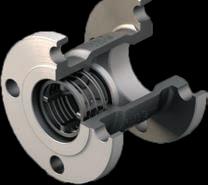

“By the end of this year, they should be faster,” Hatch says. “New workers will be able to get empties moved on quicker. There is pent up demand that couldn’t get moved that can now move easier now that their carriers are getting better.”
The rail industry’s push to staff up is a major positive for the ethanol sector. More than two-thirds of all U.S. ethanol is moved by rail domestically. Product moved into Canada and Mexico is also mainly shipped via rail. The AAR says that in the past five years, nearly 395,000 carloads of ethanol have been moved per year. And it's not just about moving ethanol from the plant.

Many producers use trains to bring in grain and move out distillers grains.
With the added numbers of personnel expected in the field, Hatch says the time percentages that reflect how long cars are waiting at origin or remaining idle when they could otherwise be en route to the next location, will go in a better direction. Empties will also be turned around quicker. Failures will also go down. “I think it is already happening now,” Hatch says. “They are getting




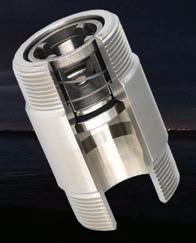

better every month. That’s what I tell investors.”



Ethanol producers, along with others impacted by rail, should watch the overall velocity of the system to see the effect of a stronger workforce. “It’s not going to be a performance disaster anymore. It is getting better.”

32 | ETHANOL PRODUCER MAGAZINE | FEBRUARY 2023
HIGH DEMAND: Freight cars and tank cars are in strong demand post pandemic. BNSF and other Class I carriers are working to staff up eld crews.
PHOTO: BNSF
- Enough corn to feed 37,000 chickens for life
- Enough lumber to build more than five homes
- Enough grain to make 258,000 loaves of bread
- Enough oil to make 13,500 gallons of gasoline
- Enough ammonia to fertilize 770 acres of corn
SOURCE: ASSOCIATION OF AMERICAN RAILROADS
Author: Luke Geiver
Mo re than a Check v alv e Order at: ww.checkall.com Call us at 515-224-2301 or email us at sales@checkall.com
Contact: editor@bbiinternational.com
























Hygiene is an important and often overlooked part of plant operations, says Stephanie Gleason, Ph.D, and director of global technology for Phibro Ethanol. “By maintaining plant hygiene through an effective CIP and microbial control program, plants have the potential to reduce process upsets and production losses,” she says. Generally speaking, cleaner plants have fewer infections, higher yields, reduced inputs and decreased downtime.
While different clean-in-place and hygiene providers serving the industry have varrying means of keeping biorefineries clean, all agree that the financial benefits of their solutions far outweigh the associated costs.

Control What You Can
Gleason and her team are big proponents of controlling infections at the plant by establishing and monitoring a plant hygiene program. “Establishing a baseline for what is “standard” for the plant’s specific operations is essential in being able to identify and monitor problems.”
Establishing a program or even updating an existing program is a multi-step process. The early steps involve creating a program for monitoring contamination in the plant, a job that requires a look at the plant’s baseline hygiene and the effectiveness of current microbi-
al control methods. To set a baseline for a facility, evaluations of organic acid in multiple processes have to happen, specifically for prop and ferm profiles, early ferm and drop and delta organic acid production. A review of past and current data should look at environmental conditions such as temperatures and pH levels throughout the plant. Process variables to consider include nitrogen additions. Profiles of fermentation sugars and ethanol are also important.
“The simple goal is to be able to quickly establish deviations from the baseline and take corrective action,” Gleason says.
Phibro’s team estimates that contaminated fermentations (one of the main sources where dirty plant elements show up) can result in reduced yields. For a 1 percent loss of yield due to infection, it could cost a plant more than $2,000 per ferm, not including any downstream processing problems due to high residual sugars. The most common genus of infection types is lactobacillus—accounting for more than 50 percent of infections—followed by lactococcus at 9.1 percent.
Phibro puts contamination into three levels: low, mid and high. At the low level, there is little to no change in analytical measurements, limited change in performance but an increase in microbial load. At the mid-level, there are measurable changes to drop ethanol and sugars, as well as yield. Organic acid concentration increases on HPLC monitoring as well. And at the highest level of contamination, there are significant increases in the drop sugars and organic acids.
34 | ETHANOL PRODUCER MAGAZINE | FEBRUARY 2023
FOCUSED CONTROL: An effective hygiene program is critical to bacterial control and plant optimization. Reduced infections create less yeast stress, allowing higher titers, lower sugar drops and increased productivity.
PHOTO: STOCK
Cashing In On CLEA N
Clean-in-place service experts and hygiene specialists explain the steps to get—and stay—clean for enhanced microbial control, optimal yield and productivity.
By Luke Geiver
Productivity is noticeably reduced, along with process efficiency and, most importantly, yield.

Gleason reminds producers that ethanol plants are not typically sterile environments. There is almost always a background level of contamination in the plant, so it becomes about control and limiting opportunities for contaminations to cause infection events.
In general, a plant benefits with an effective hygiene program in a multitude of ways. Reduced infections create less yeast stress. Reduced yeast stress creates higher titers, lower sugar drops and increased productivity. It also promotes less competition for microand macro-nutrients along with decreased recycling of inhibitory metabolites.
Then, there is reduced carbon loss from excess organic acid formation, improved heat transfer across unit operations and lower energy inputs (from less steam needed). A good program will also extend the time between major cleaning events, reducing that annual cost.
“These benefits have the potential to lead to higher yields, reduced inputs and decreased downtime for plants,” Gleason says.
The Phibro team helps provide guidance on sample collection and locations to form a baseline in an ethanol plant. Gleason and her team analyze and interpret the fermentation data. The team also helps plants identify areas to monitor including key process areas, visual and tactile inspections and specialized imaging.
Through its diagnostic kits, the Phibro Ethanol team helps plants troubleshoot infections and identify sources of contamination in the process.
“At Phibro Ethanol we have a philosophy,” Gleason says. “Get clean. Stay clean.”
Cleaning for The Bottom Line
Ryan Brock, technical services manager for Lallemand Biofuels and Distilled Spirits, says that it costs significantly more to ignore hygiene problems or react to infections than to have a robust maintenance program established for a production facility. “Companies that put focus on hygiene have fewer costly events and much less downtime as a result,” Brock says.
The numbers of a monthly cleaning program prove Brock’s point. For a standard caustic CIP, the standard bulk delivery of cleaning products ranges between $0.16/lb to $0.24/lb. Bulk deliveries of products comes in via truckload, typically ranging from $19,000 to $64,000 in cost. Some plants get three loads per month, others get six. Additional costs can be added if antibiotic maintenance dosing products are added. Depending on the ferm runs that are treated, these costs can range from a negligible $90/day to as much as $2,880/day.
The breakdown for monthly maintenance costs, according to Brock, is as follows. Monthly caustic costs run from $20,000 to
ETHANOLPRODUCER.COM | 35
Cleaning
Cleaning
$65,000 per month. Monthly antibiotic expenses range from $2,700 to $90,000 per month. Total monthly expenses, which depend on plant size, run rates, hygiene practices and equipment onsite, can range in cost from $23,000 to $155,00 per month.

For Brock and his team, they see and treat infections in the mash trains, fill header (single loop) and beerwell. “Most people ignore infections here (beerwell),” he says, and consider it the trash can. After fermentation, bacteria present there can get back into fermentation through various means, “so it is still important to clean,” because lactic acid recycling inhibits future fermentations and bacteria steal nutrients that could remain in process for future generations.
Predominant Genera:
Lactobacillus = 54.5%
Lactococcus = 9.1%
Enterobacter = 6.4%



Weissella = 5.8%
Staphylococcus = 5.2%
Genus
Actinomyces
Bacillus
Bifidobacterium Clostridium Corynebacterium Enterobacter Enterococcus Klebsiella
Lactobacillus Lactococcus Leuconostoc Pediococcus Staphylococcus Streptococcus Weissella
To prove his point on the value of maintaining a clean fermentation process, Brock lays out this scenario based on results his team has seen or worked with. If a dirty fermentation of 12.5 weight/volume percentage is allowed, it will produce a fermentation working volume of 116,297 gal/ ferm. If that ferm is made clean, it can reach 14.5 weight/volume percentage and make 137,658 gal/ferm. At $2.00/gal ethanol, the difference between the two scenarios is $42,722 per ferm (achieved on the high end by avoiding the loss of 21,361 gallons per ferm). At 8-hour fill times, that equates to $128,000/day in loss. So, as Brock and his team put it, should a plant invest in maintenance and CIP protocols or react to a problem when it happens? The CIP investment will run between $23,000 to $155,000 per month. The scenario described above equates to a total monthly infection loss ($128,000 x 30 days) of more than $3.8 million/month.
For plants looking at improving CIP, Brock says there are actions that are essentially “free” and others that cost but have advantages. The “freebies” include establishing a plant cleaning schedule, updating standard operating procedures (SOPs), inspecting lines, monitoring spray balls, double checking pressures and temps manually and checking samples on HPLC. The op-
36 | ETHANOL PRODUCER MAGAZINE | FEBRUARY 2023
54.5% 9.1% 5.2% 3.0% 2.1% 1.2% 5.8% 1.5% 0.9% 2.7% 3.0% 0.3% 6.4% 3.9% 0.3%
THE USUAL SUSPECTS: Infections in the fermentation process can compete with inoculated yeast for nutrients and reduce process e ciency. The source of most upsets is lactobacillus.
PHOTO: PHIBRO ETHANOL
TOTAL PLANT OPTIMIZATION: CIP experts like Ecolab can create a system designed to clean an entire plant. The company says that while satellite CIP programs, with multiple CIP systems located throughout a plant, offer exibility, centralized CIP offers e ciency of scale and simplicity.
PHOTO: STOCK
tions that come with a price include repair or replacing failing equipment, removing deadlegs, bleaching sumps or the beerwell, lowering the beerwell level and CIPing the top, cleaning out caustic tanks, upgrading CIP pumps or adding boosters, and cleaning out the whole stillage/PC.
Optimizing Your CIP Program
Mark Altier, senior program leader for Ecolab RD&E, helps lead a team focused on water, hygiene and infection prevention solutions and services. Ecolab can provide CIP solutions for several areas of an ethanol plant, including the distillation, liquefaction, evaporation/drying or fermentation areas. Altier’s team has created satellite CIP systems and central CIP options.
The satellite systems can be placed throughout a facility, providing flexibility and giving the plant unique application options, with some additional equipment management. The Central CIP approach provided by Ecolab includes a large, centrally-located single unit that provides a better efficiency of scale. It’s a more simple system but it doesn’t come with as much flexibility or unique ability as the satellite units.
In general, Altier says that optimizing CIP practices is not a “more is better” scenario. With CIP, every plant is different and there is no one-size-fits-all approach. Optimization, he says, can lower overall operational costs.
To provide CIP optimization, Ecolab focuses on several factors, including: reducing cleaning time; increasing production uptime; cleaning more effectively; driving throughput; consistency in the cleaning program; servicing and auditing for optimal performance and maintenance and lastly; reducing total operating costs.
Ecolab has had success with heated surface pretreatment technology used in the evaporation/drying areas along with the liquefaction portion of the plant. Using a penetrating pretreatment chemistry over


relationships matter in agriculture
Work with a lender who values you and understands your business. Our Agribusiness and Capital Markets team will customize a plan to fıt your needs. Contact us today to discover the power of the co-op.

ETHANOLPRODUCER.COM | 37
SERVICE
CUSTOMIZED
F OCUSED ON AG. FOCUSED ON YO U.
JESS BERNSTIEN NICOLE HATLEN 877-811-4073 AgCountry.com
the surfaces, an alkaline override reaction takes place and helps remove soil and other unwanted deposits from the surface. The result of the process is a significant improvement in cleaning effectiveness and time. Other areas that have benefited from Ecolab’s total plant cleaning approach include the syrup line, disk stack centrifuges and tricanter.



Working with a producer, Ecolab was able to provide several benefits related to the evaporator. The numbers tell the story. The team took a standard CIP time of 16 hours down to 4.25 hours (11.75 hours saved per week). The CIP changes involved removing cleaning acid, reducing hydroblasting, increasing corn oil efficiency, improving pressure differentials and increasing ethanol production. The corn oil production additions brought nearly $100,000 to the plant and the elimination of hydroblasting saved the plant roughly $160,000 annually.
On the fermentation side, Ecolab has found success with low pH cleaning programs designed specifically for a fermentation environment. The approach puts less chemicals into the fermentation cycle. The products used are also recognized as safe for animals. The product lineup includes three components: Trimeta Advance for build alkaline, Trimeta Dynamic to act as a detergent booster, and Trimeta Armor for a final rinse.
For any plant looking to enhance its CIP program, Altier says there are considerations to look at right away. Materials used in construction matter, along with foam characteristics where liquids are involved. Vertical or horizontal dead legs should be avoided, along with product holdup in lines and equipment. The correct spray ball design and configuration should also be optimized. “Every plant is different,” he says. “Ecolab can help build a program that meets your unique needs.”
Author: Luke Geiver
Contact: editor@bbiinternational.com
38 | ETHANOL PRODUCER MAGAZINE | FEBRUARY 2023
Cleaning Standard Caustic Cleaning • Standard Bulk Deliver • 40,000-45,000 lbs. • Bulk Caustic Price • $0.16-0.24/lb. • Price per Truckload • $6,640-$10,800 • 3-6 Trucks per Month • $19,920-$64,800 THE COST OF CAUSTIC: Although cleaning comes at a signi cant cost, it outweighs the risk of infection. As an example, caustic alone can cost tens of thousand of dollars per month. SOURCE: LALLEMAND BIOFUELS & DISTILLED SPIRITS With ch oice s fr om spon geblas ting , hyd ro bl as ting , indus tr ia l vacu uming and mor e , P re mium Plan t S er vi ces has t h e r ig h t mix o f maint enance options for your f ac ilit y. • Conf ined space rescue • Dr y ice blasting • Hydroblasting • Hydro reclamation • Indus trial vacuuming • Restoration • Sandblas ting • Slurr y blasting • Spongeblasting • Surface chemical cleaning • Tube bundle and heat exchan ger cleaning . Hibbing , MN • D ubuque , IA • Tra cy, M N St even s P oint , W I ( 888 ) 54 9- 18 69 WE ’V E GO T YOU COV ERED.
in rh ythm with natur e




embracing nature’s power
A New Take on Antimicrobials
Technology company Archangel Inc. has released a new antimicrobial that gives producers an antibiotic free option to maintaining the health of their propagation/fermentation. Their most recent technology is the NOVA chemistry line, a gram negative/ gram positive antimicrobial that has proven commercial application for over five years. The newest product in the line is NOVA EZP, a 98% concentrated, dried powder form of the formulation, which can be applied to an ethanol producer’s process in the same way as a traditional antibiotic, the NOVA chemistry line is both GRAS and Kosher approved. “We are focused and our vision in life is antimicrobials, which includes new technology that is antibiotic free, products to enhance efficacy and regular antibiotics,” says Allen Ziegler, CEO of Archangel.
NOVA EZP is a biofuel antimicrobial that can enhance any process and work in conjunction with traditional antibiotics; it is not an either-or option. EZP is an especially good fit for ethanol producers that are producing neutral/distilled spirits, coproducts such as high protein distillers grains, or aquaculture products in which process antibiotic residue may not be desired. “The economics, which are at least even, if not better than what you get from the performance level, which has never been the case for any antibiotic-free technology to date,” Ziegler says.
Archangel also gives producers tools to manage their microbiome, he explains. The company's Genesis Gene DNA technology allows producers to get quick and accurate information about the makeup of their microbiology biome.

40 | ETHANOL PRODUCER MAGAZINE | FEBRUARY 2023
Spotlight BY KATIE SCHROEDER
An economic alternative to antibiotics, Archangel gives producers cutting edge technology to maintain fermentation health.













REACH 8,000 PROFESSIONALS All Ethanol Producer Magazine subscribers All Ethanol Production Facilities All major Ethanol related events - 2023 International Fuel Ethanol Workshop & Expo (in all attendee bags) - 2023 ACE Conference - Ethanol 101 Reach Producers PURCHASE A SPOT ON THE ETHANOL PLANT MAP Receive 6 Months FREE Online Advertising! Advertise now on Ethanol Producer Magazine’s U.S. & Canada Ethanol Plant Map. It is the easiest and most cost-effective way to get your name, product and/or service in front of ethanol producers and ethanol industry professionals for 6 months at a time. Book Your Ad AD SPOTS LIMITED Summer 2023 Map Ad Deadline: March 23, 2023 Mailed with the July 2023 Issue of EPM Need more info on advertising opportunities? service@bbiinternational.com - 866-746-8385 - EthanolProducer.com REACH YOUR TARGET AUDIENCE
















to our integrated platform of r ailcar products and services, TrinityRail is the industry’s unmatched r ail r esour c e, pr o viding the co n fidence y our business
Trust N orth America’s premier pr o vider of r ail transportation solutions to deliver the quality, innovation and e xpertise y ou need to meet every business challenge. Ev ery time. Learn more at TrinityRail.com.
PREMIER PROVIDER. YOUR TRUSTED PA RTNER.
Thanks
deserves.
THE




















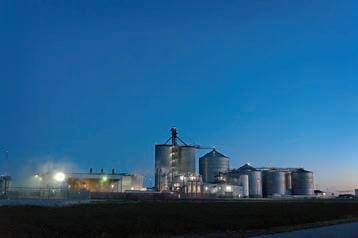


ETHANOLPRODUCER.COM | 43 GAIN MAXIMUM EXPOSURE& CONTACT INFO Live + OnDemand www.EthanolProducer.com/pages/webinar Website All emails Advertisements Sponsor Featured On: Contact us today for more information service@bbiinternational.com or 866-746-8385. WEBINAR SERIES Webinar page on EthanolProducer.com OnDemand material Attendee Information Post unlimited 30-day online listings for 1 year jobs.ethanolproducer.com POST UNLIMITED JOBS 800-279-4757 | 701-793-2360 Over50YearsofExperience Callusforafree,no-obligation consultationtoday. www.natwickappraisal.com natwick@integra.net The Specialist in Biofuels Plant Appraisals • Valuation for nancing • Establishing an asking price • Partial interest valuation EPM Marketplace
308 2nd Ave. N., Suite 304 Grand Forks, ND 58203
















































































 By Katie Schroeder
By Katie Schroeder







 HOST FACILITY: By electing to pursue carbon utilization over sequestration, Red River Energy will be directing its clean CO2 into another low-carbon fuel, supporting a co-located green methanol plant.
PHOTO: RED RIVER ENERGY
HOST FACILITY: By electing to pursue carbon utilization over sequestration, Red River Energy will be directing its clean CO2 into another low-carbon fuel, supporting a co-located green methanol plant.
PHOTO: RED RIVER ENERGY




 Author: Katie Schroeder Contact: katie.schroeder@bbiinternational.com
Author: Katie Schroeder Contact: katie.schroeder@bbiinternational.com








 By Katie Schroeder
By Katie Schroeder















 TANK TALK: Coproducts from the ethanol industry have the potential to be used in a variety of aquaculture purposes. Here, representatives of Iowa Corn tour a sh hatchery in Montana operated by the U.S. Fish and Wildlife Service.
PHOTO: USGC
TANK TALK: Coproducts from the ethanol industry have the potential to be used in a variety of aquaculture purposes. Here, representatives of Iowa Corn tour a sh hatchery in Montana operated by the U.S. Fish and Wildlife Service.
PHOTO: USGC

 Author: Katie Schroeder Contact: katie.schroeder@bbiinternational.com
Author: Katie Schroeder Contact: katie.schroeder@bbiinternational.com






























































































































